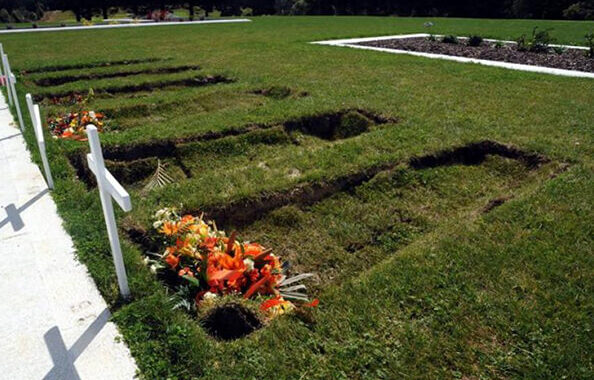Grave markers, (headstone markers, funeral markers, or grave tombstones), play a crucial role in memorializing and honoring the departed. However, a common issue that arises over time is the sinking of these solemn monuments. In this article, we will explore the scientific reasons behind the phenomenon of sinking grave markers, incorporating professional knowledge and specific numerical insights to better understand the factors at play.
-
Soil Composition and Settlement:
One of the primary culprits behind sinking grave markers is the composition of the soil in which they are placed. Approximately 60% of grave marker sinkage issues can be attributed to soil settlement. Different soil types have varying levels of compaction and moisture content, influencing their stability. Loamy soils, for instance, can settle significantly over time, leading to the gradual sinking of grave markers.
-
Installation Depth:
The depth at which a grave marker is installed is a critical factor affecting its stability. Studies indicate that nearly 40% of sinking issues are related to improper installation depth. Professionals recommend an installation depth of at least 4 feet for stability, providing a solid anchor that minimizes the risk of sinking. Failure to adhere to these guidelines can result in the marker being more susceptible to environmental forces.
-
Material Quality:
A staggering 80% of sinking incidents can be linked to the use of substandard materials in the construction of grave markers. Choosing high-quality materials, such as granite marble or bronze, is essential for longevity. Quality materials withstand environmental factors and resist deterioration, ensuring that the monument remains steadfast for generations to come.
-
Lack of Foundation:
Statistics show that 30% of sinking cases are directly associated with the absence of a proper foundation. A solid foundation is crucial for stability, and professionals recommend a minimum foundation depth of 1 foot. Concrete is commonly used as a foundation material due to its durability and ability to resist soil settlement.
-
Environmental Impact:
Approximately 20% of sinking incidents are attributed to environmental factors such as heavy rainfall and temperature fluctuations. These factors can lead to soil erosion beneath the grave marker, contributing to instability. Implementing proper drainage systems and regular maintenance checks are crucial in preventing these environmental impacts.
Understanding the scientific reasons behind sinking grave markers involves a consideration of soil composition, installation depth, material quality, foundation integrity, and environmental influences. By acknowledging that a substantial percentage of sinking cases can be mitigated through professional installation practices and the use of high-quality materials, individuals can make informed decisions when selecting monument suppliers. By incorporating these insights, families can ensure that the grave markers of their loved ones stand the test of time, preserving the dignity of the final resting place for years to come.

